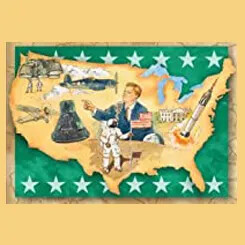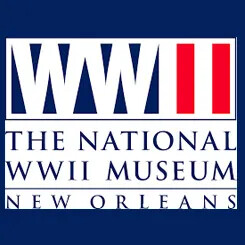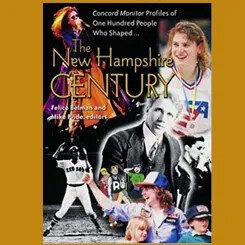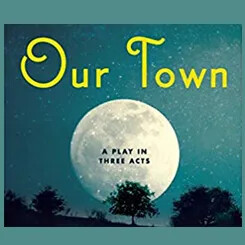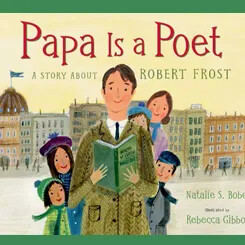Economic Crises
How did New Hampshire deal with the economic challenges of the early 20th century?
The Decline of New Hampshire’s Textile Industry. The Amoskeag Manufacturing Company saw record profits during World War I thanks to wartime production, but these gains were fleeting. While the American textile industry overall grew in the first decades of the 20th century, most of those gains were in the South. New sources of energy, like petroleum and electricity, replaced water power and meant that cotton could be processed and woven where it grew instead of being transported north. Labor costs had already risen after New Hampshire passed a law in 1911 that prohibited children under 14 from working during the school year. Southern states paid lower wages and had lower fuel and power costs. New Hampshire’s textile manufacturers could not compete with these southern advantages and were further hampered by outdated machinery, overproduction, and a decline in labor relations.
The first long-term strike in the history of the Amoskeag Company began in February 1922 and was an important turning point for the company and its workers. An increase in working hours along with a 20 percent wage cut prompted the strike, which was led by the United Textile Workers (UTW) union. The strike forced management to close the mills until the summer, when a few reopened with the pre-strike wage scale. Workers were forced to return to work or starve, and by November, most mills were functioning with at least a partial labor force. On November 25, the UTW called off the strike without achieving its goals.
Amoskeag never really recovered from the strike, which severed the traditionally close bond between its employees and the company and left the workers demoralized. Similar situations occurred in textile companies in Nashua, Dover, Newmarket, and Somersworth.
As textiles declined, the shoe industry filled in the gaps in New Hampshire’s industrial cities. Shoe manufacturing was dominated by big companies, sometimes connected to national operations. The W. H. McElwain Company opened the largest shoe factory in the nation in Manchester in 1912, and for a time Manchester was known as “Shoe City.” McElwain had several other factories in the state, including in Claremont, Newport, Nashua, and Dover. By 1930, the value of shoe manufacturing in New Hampshire exceeded the value of cotton cloth production.
The Great Depression. Thanks to the decline of the textile industry, New Hampshire had been in an economic slump for years before the Great Depression hit the rest of the country in 1929. While the national unemployment rate hit 16 percent in 1931, it was a staggering 33 percent in New Hampshire. Thousands were out of work and in need of food and other necessities, and agricultural prices were so low that half the state’s farms shut down. Those who still had jobs saw their wages slashed. To make matters worse, New Hampshire was beset by a number of devastating natural disasters in the 1930s. These included localized catastrophes, like a fire that destroyed an entire neighborhood in Nashua in 1930 and left more than 500 people homeless, as well as statewide disasters, like catastrophic flooding in 1936 and the hurricane of 1938.
New Hampshire’s governor John Winant was a reformer who favored implementing government programs to solve some of the problems created by the Great Depression. Under his leadership, the state government instituted programs such as a minimum wage for women and children, increased state aid to towns and cities, emergency relief for dependent mothers and children, and some regulation of the banking industry. Winant also enacted a state roadway construction program that employed 3,000 men. Other proposals, such as old age pensions, improved workers’ compensation, and a statewide teachers’ retirement system, failed to make it through the state legislature. Though a Republican, Winant supported Democratic President Franklin D. Roosevelt’s New Deal policies. The New Deal worked to stimulate the economy and provide Americans with a financial safety net through federal programs.
Government Jobs Programs. One important piece of the New Deal was getting people back to work. The federal government created work-relief programs, using federal funds to pay American workers for all sorts of jobs. Thousands of New Hampshire men and women went to work for federal jobs programs like the Civilian Conservation Corps (CCC) and the Works Progress Administration (WPA), building parks, playgrounds, ski jumps, and golf courses, as well as building and widening roads, improving drainage and sewer systems, and clearing diseased trees from farmland.
The CCC was created in 1933 to put unemployed young men to work on conservation and infrastructure projects. Open only to men, run by the U.S. military, and segregated by race, the CCC employed over 20,000 Granite Staters, some as young as 17 years old, who lived and worked in camps that dotted every region of the state. Room, board, medical care, and some educational programs were provided in the camps, so most of the corpsmen’s wages were sent directly to their families, providing a crucial source of income during the Depression. New Hampshire also reaped economic and ecological benefits from the CCC. Before the program ended in 1942, CCC workers built or repaired dams, bridges, and roads, planted trees, constructed ski facilities including Cannon Mountain and Waterville Valley, marked hiking and bridle paths, and fought wildfires. Hundreds of campgrounds, hiking trails, and public parks in New Hampshire owe their existence to this program.
The WPA launched in 1935. Like the CCC, it supported public works projects like bridges, roads, airports, and sewer and water works. The WPA was open to both men and women, and thousands of New Hampshire women were hired for a variety of positions. They worked in clerical jobs, sewed clothing that was then distributed to needy families, or gardened and then canned the resulting produce. Women also participated in a branch of the WPA known as the Federal Arts Project, which employed artists to create art in multiple formats, including murals, paintings, watercolors, wood carving, statues, photography, theatrical productions, and music compositions and performances. The murals created under the auspices of the Federal Arts Project often adorned public buildings like schools, hospitals, libraries, and post offices. For example, Portsmouth resident Gladys Brannigan painted murals for Portsmouth Junior High School that depicted scenes from New Hampshire’s history, such as George Washington’s visit to Portsmouth in 1789. Unfortunately, little of her work has survived. Alice Cosgrove, who later became the state artist of New Hampshire, created frescoes and murals of Mother Goose characters for an elementary school in Claremont.
Although not a federal program, the League of New Hampshire Craftsmen originated during the Great Depression as a state-supported organization that provided New Hampshire residents, especially in small towns and rural areas, with the training needed to produce traditional handicrafts for sale. Led by upper- and middle-class women, the League enabled poor women to earn some income for their families by harnessing the talents and skills they already possessed, and helped preserve these traditional art forms. New Hampshire women produced items like rugs, quilts, baskets, and jams and jellies for sale. The League remains a highly respected arts organization and important economic force for the state today.
Demise of the Amoskeag Manufacturing Company. None of these recovery measures, however, could save the Amoskeag Manufacturing Company. Wages were cut to the bone, workers were laid off or fired without regard to seniority, and the workload was increased by faster machinery, all in the hopes of cutting costs. Violent strikes in 1933 and 1934 resulted in the intervention of the state militia, and in 1935 the company began laying off workers in huge numbers. Amoskeag had 11,000 employees in March 1935, a workforce that was cut back to 6,000 in June and to fewer than 1,000 in September. That month, the mills shut down. Although the company declared its intention to reopen, it filed for bankruptcy on Christmas Eve. A devastating flood of the Merrimack River in the spring of 1936 sealed its fate, and all assets were liquidated the following summer.
The Amoskeag shutdown was devastating for Manchester. The company had controlled the economic and political life of the city for over 100 years. Most large cotton mills in New England suffered the same fate as Amoskeag in the period before World War II, leaving in their wake depressed city centers and thousands of suffering people.
To save Manchester from ruin, local businessmen created Amoskeag Industries, Inc., in 1936 to buy the company’s properties and attract new companies to the Millyard. Some were successful small textile outfits, like Chicopee, which wove gauze, and Waumbec, which wove synthetic fibers. By the late 1930s Amoskeag Industries had diversified operations in the Millyard, drawing tenants that manufactured tires, motors, and beverages, as well as service industries like dry cleaning.
